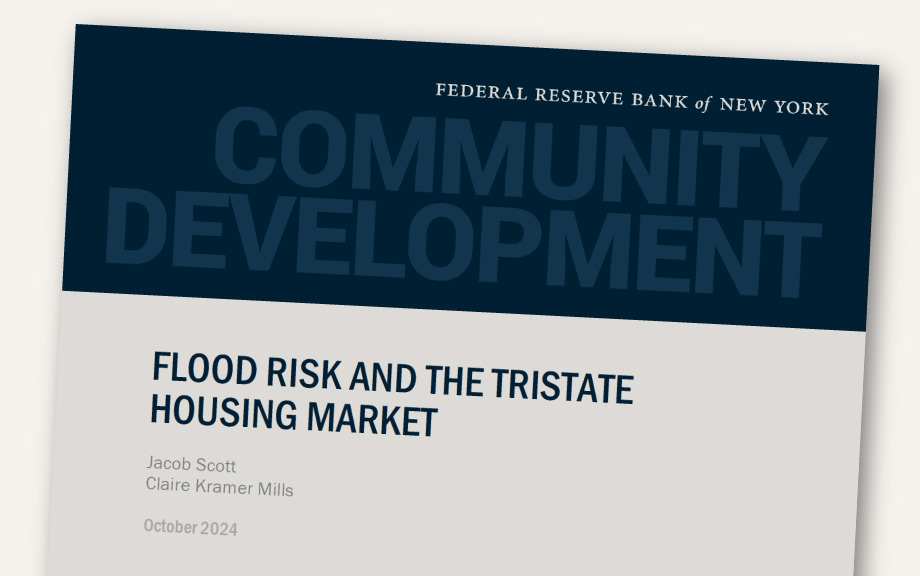
The New York Fed’s Community Development team promotes economic growth and financial stability for low- and moderate-income communities and individuals. As part of that work, the team has been examining flood risk. Its latest report focuses on flood risk to housing in the tristate area, examining the number of low- and moderate-income households at risk of flooding.
The report on flood risk to housing in New York, New Jersey, and Connecticut finds that nearly 1 million houses and multifamily buildings in the tristate area—which house more than 4 million people—are at high risk of flooding. Of that total, more than 1.5 million people live in low- and moderate-income census tracts. These buildings rank among the top 25% of riskiest properties nationally, the same flood risk category as some homes in coastal Florida, Texas, and Louisiana.
Additionally, the report finds that in some communities in the three states, nearly every property is at high risk of flooding. For example, 90% or more of properties in Long Beach, N.Y. and Keansburg, N.J. are at risk.
Earlier New York Fed research and analysis has found that approximately one in ten low- to moderate-income people, immigrants, and racial and ethnic minorities in New York City live in a flood-prone census tract. The New York Fed’s Community Development team also conducted focus groups on flooding and household finances to help improve estimates of the financial impact of flooding.
The report was developed as part of the New York Fed's Community Development efforts, which have three areas of focus: health, household financial well-being, and climate risk.
October 2, 2024










